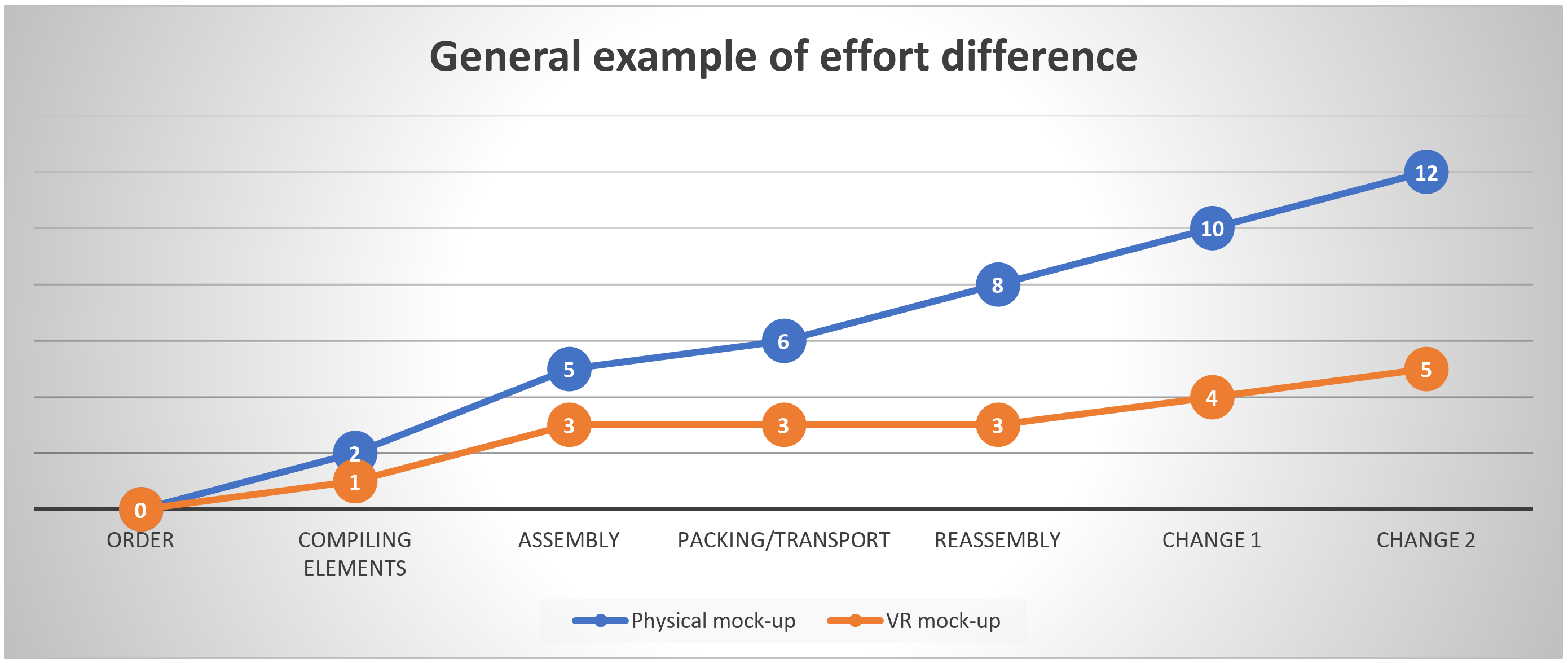20/11/2020
Visualization in passenger vessel design – Virtual world gaining on physical
Visualization is an incredibly versatile concept, and with new and evolving technology, it is safe to say that the usage of visualization will only increase and diversify further. It has the potential to become a superior tool of communication from initial ship concept to optimizing the operation an existing ship. But to keep things simpler, let’s focus on what visualization can bring to the table already today, and narrow the scope to cover something a cruise vessel has a lot of and can’t live without: interior spaces.
Table of content:
- Offering a positive customer experience through interior design
- Why psychical mock-ups are slowing you down?
- Virtual mock-up saves time, effort and costs
- Key factors for a successful and realistic virtual mock-up
- Creating added value with simulation and embedded information
Offering a positive customer experience through interior design
Interior design is a make-or-break -factor in the success of a commercial passenger vessel. If a cruise does not attract potential customers with aesthetic cabins, captivating public spaces and a plethora of exciting activity possibilities during voyage, they will unlikely turn into passengers. Cruise trends evolve and fluctuate, but one ever-remaining constant is that the passengers’ experience must exceed a stay in a regular hotel on dry land, or they can’t be expected to be seen onboard.
Due to the large cruise offering by various companies, a constant question in Shipowners’ heads is how to make customers return to a cruise they have already been to, or at least pick their next cruises from the same company. The simplified answer to that is positive customer experience. Each solution in any shipbuilding discipline affects the overall performance, safety and effectiveness of a cruise ship, but no other decisions affects the customer experience as much as decisions concerning interior design. That’s why it is a sector in which it is crucial to invest.
Why psychical mock-ups are slowing you down?
Usually, shipowners outsource the design of interior (and largely also exterior) spaces to architects and interior design offices. Their work is refined down the line by marine design professionals i.e., engineering offices, so that all regulations are adhered. After the designs are complete, the work is transferred to TK suppliers. With their experience, many materials and structures can still undergo changes to assure that the level of complexity and budget is not exceeded. Before final approval, TK -suppliers need to make physical mock-ups of several items on a space, or even complete small space such as a passenger cabin. The notion to take away from this process is that designs are in a state of flux for a long period and start to freeze only until something physical is produced. The reason for this is that until then, it is hard to fully grasp how a certain space or an item inside it works and looks like, at least with the current usage of visualization tools.
In the viewpoint of visualization, the only delivered material in most cases are 2D renderings made by architects. This material is meant to augment i.e., AutoCAD drawings. The most valuable thing they show are the materials and textures used in a space. However, since these renderings are not made by marine design professionals, and the emphasis is only in delivering visual information, not solving technical issues, they often contain impossibilities, and the structures are simplified. This results in the material’s lowered value. Overall, this may result in visualization to be considered a low-importance activity in shipbuilding, used only as marketing material for the interested and “nice to know” -information to the designers and builders of the vessel. This is an outdated take, because visualization can be a valuable, time- and money-saving instrument if the toolset (and mindset) is updated to its potential. The spearhead for the toolset is virtual reality (VR), and the goals which it can achieve already today are speeding up design, cutting costs and creating a basis for early decision-making.
Virtual mock-up saves time, effort and costs
Virtual reality is not a new or exclusive thing. Many people have already had some form of contact with it. Shipowners and shipbuilders may have tested it, or even procured their own gear. Architects can also nowadays provide VR -scenes of the spaces they have designed. The general problem, and the hinderance to further expansion seems to be the underwhelmed experiences and limited values of the results. But the value of the results is in direct correlation with the amount of effort.
It is rather simple (read: cheap) to create a VR scene from an already existing 3D-model. Very commonly that is where the effort stops. The viewer can immerse in the space, but it is static. Nothing moves or interacts except the viewer. Lack of effort causes the viewer to be able to casually walk-through walls and furniture leading the experience then to feel unrealistic. Top that off with a low-end headset with an eye-irritating pixel screen and the result is a bored viewer, who can’t wait to finish, because of a looming headache. Ironically, if things are done differently, the experience is the total opposite. That is why it’s important to convey what can be achieved by adding a little more effort.

EFFORT DIFFERENCE IN PHYSICAL MOCK-UP VS. VR MOCK-UP
But first, let’s put some perspective on the effort. It is only feasible to study the effort level a high-quality VR -space needs if it is paired up against the same levels of a physical space. A crucial fact to remember is that a virtual mock-up can be made as soon as initial plans are ready with a fraction of the effort compared to a physical mock-up. This means that valuable information is available much sooner in the project and money is also saved by making decisions and correcting mistakes before any physical production. Once the elements are created, it is even faster to make changes whenever the need arises. Nothing needs to be gathered, shipped, assembled and disassembled. There are no material costs. When these aspects are stacked up, it is clear to see that there is a lot of headroom for virtual working before even approaching the effort needed for a basic physical mock-up. Additionally, the VR space can be viewed from wherever on the globe and by as many people as needed without travelling.
Key factors for successful and realistic virtual mock-ups
The key aspect for utilizing VR as a valid tool is to increase information value. Elomatic builds all VR scenes with a physics engine, so they can be made interactive. This means that doors, windows, cabinet drawers etc. can be opened and closed and furniture and other items can be moved with a virtual hand. Walls can’t be penetrated, if the viewer walks forward towards a wall, the movement is stopped in the VR scene. It is also possible to insert a sound effect implying contact. This opens up spatial studies of e.g., passenger cabins in another level.
The only thing still lacking from the VR experience is touch. But with the features previously mentioned, this is becoming more and more unnecessary. However, if it is imperative that that walls etc. can be touched, a simplified physical space with correct dimensions can be built with simple materials such as plywood. in there the viewer can walk around with a VR headset on and touch a wall where it is also virtually seen. Still, we remain under the costs of a full-on physical mock-up.
Different layouts, textures and appearances can be compared back and forth with a flick of a hand. Accurate and realistic lighting conditions can be generated in the space, so it can be viewed for example in daytime, nighttime and in possible emergency lighting. Windows can show an animated scene, like ocean waves, and since many high-quality VR -headsets contain also headphones, the immersive experience can be deepened with sounds. The image quality on these headsets is pleasantly high so headaches can be forgotten. There are already headsets so precise on the market, that pixels are not seen at all.
Creating added value with simulation and embedded information
A VR scene should be thought of as a separate, engineered world of its own. When the visualization team happens to be backed up by a complete spectrum of marine design professionals such as in Elomatic, the world can resemble our physical world quite accurately. For example, walls are not only surfaces without any material thickness, but actually have the correct thicknesses and layers. This way any details, like joints can be inspected, and that is a level of information very few can offer, and many are interested in. But still, the greatest benefit of the VR world is that it can also be augmented with information which is intangible in our physical world.
A great example of what is meant by this are simulations. Elomatic employs a technical analysis team capable of running various, completely accurate simulations, which in turn the visualization team can turn into easily understandable visual data, existing in the virtual world but representing the unseen reality. Let’s say an AC designer would like to see how the air flows in a passenger cabin. The fresh supply air coming in can be made as a visible gas cloud, presented by blue color. As it spreads in the room, it starts to turn orange before vanishing to the exhaust. The designer can literally stand in the middle of the simulation, and it can change dynamically when the space is manipulated, for example balcony door is opened.
One additional benefit to be mentioned is that virtual spaces can also have all kinds of incorporated infographics, which can show numeric and written information, usually in the form of a floating pop-up screen. it makes evaluations and comparisons that much easier. When considering a public space with a lot of loose furniture, the infographic can show for example the changes in price if certain furniture is changed to another. A key factor in passenger comfort are noise levels. All virtual material can be embedded with noise dampening attribute data, leading the computer to be able to calculate the decibel level in the space.
The beauty and true potential of VR is that it can be taken as far as wanted. When the initially low level of effort is increased, the information value of a virtual space can actually quite quickly overtake physical mock-ups in the end. This hopefully tips the scale so, that in the near future, the customers will obtain a clear understanding that VR services (and their professional providers) are the most user-friendly and convenient way to go.

